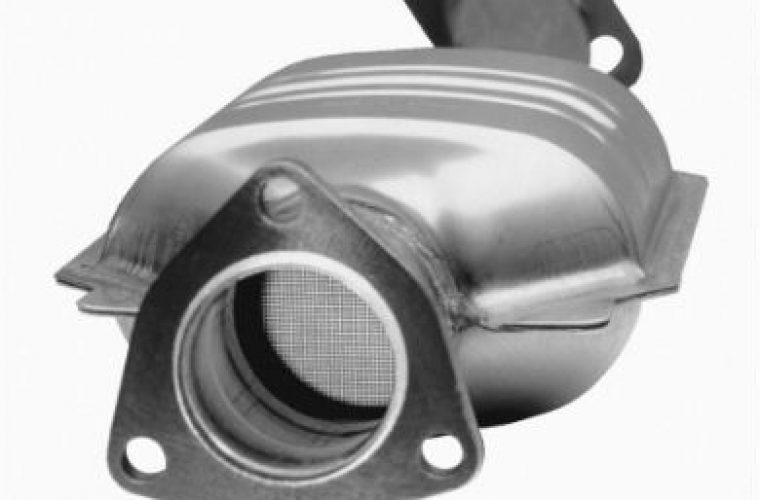There are some similarities between a standard CAT and a DPF, they both use a ceramic or metallic element that exhaust gases pass through, the major difference is that a DPF is essentially a filter that collects soot and is a service component.
A catalyst changes the chemical composition of the exhaust gas rather than filtering it, the exhaust gas passes through the CAT and a reaction takes place on the surface of the ceramic block or monolith which is coated with a mixture of platinum, palladium or rhodium.![]()
Ceramic monolith CAT and DPF failure modes
A CAT, given ideal operating conditions will not fill-up or wear out, it should last the life of the car.
What tends to happen in reality is that engine issues can occur that for example create very high temperatures due to unburnt fuel exiting into the already hot catalyst brick and igniting, effectively fire damaging the core.
Other engine issues that cause oil to be blown out of the exhaust manifold can quickly cover the monolith surfaces in a tough black coating that stops it working and is very difficult to remove.
There is also mechanical damage to consider, stones being thrown up from the road can break-up the ceramic brick if they impact in the wrong place, as can direct hits from speed calming mounds.
Temperature shock caused if a hot catalyst or diesel particulate filter is doused in very cold water on a winter’s day can also have the same effect. In all cases the CAT or DPF will require replacement.
A metallic core is more resistant to impact damage and temperature shock, but the vast majority of modern CATs are ceramic for cost reasons – metal versions are stratospherically expensive.![]()
DPF specific failure modes
The big difference with DPFs is that over time they fill-up with soot and other particulates from combustion and will periodically go through a renewal cycle where the soot is burned off.
This process creates a small amount of ash each time it happens, which will eventually block the DPF and it will require replacing.
When a replacement is required due to it being full of ash to the point where it causes an issue can vary widely, cars that have particularly dirty engines and are taken on only short journeys where the engine temperature rarely reaches ideal operating conditions will create more soot, fill the DPF more often, regenerate more often and become full of ash more quickly.
It is possible to need replacement after just 20k miles, but more often it happens at around 60 to 80,000 miles.
For some vehicles with leaner burning engines, doing long journeys the DPFs might never need replacing and can last 250,000 miles in extreme cases, what still remains is that many vehicles will require a replacement at some point during their life.
When is a CAT and a DPF fitted?
Many modern diesels will have both a DPF and a CAT in order to meet ever stricter emissions standards.
In some cases the units are separate and can be replaced individually, but many are combined into one part and increasingly the trend is to move both nearer to the exhaust manifold so that they get up to working temperature sooner.
Some, such as many recent Fords have combined both filter and catalyst into the same canister and made it part of the exhaust manifold itself.
This does protect the unit more from cold splashes and mechanical impacts, but it is more expensive to replace if engine running issues cause damage.![]()
Quality
Concluded the advice, Klarius said: “It is worth noting that the difference in quality between a poor aftermarket replacement and a premium unit such as a fully type-approved one made in the UK by Klarius for example might not be so obvious from the outside but can be night-and-day on the inside, even though prices are likely to be very similar.
“Both CATs, DPFs and combined units from Klarius have full-size ceramic monoliths and plenty of precious metal surface coating that makes the catalytic process work in the case of the CATs.”
For more information about Klarius, select ‘more details’ below.







